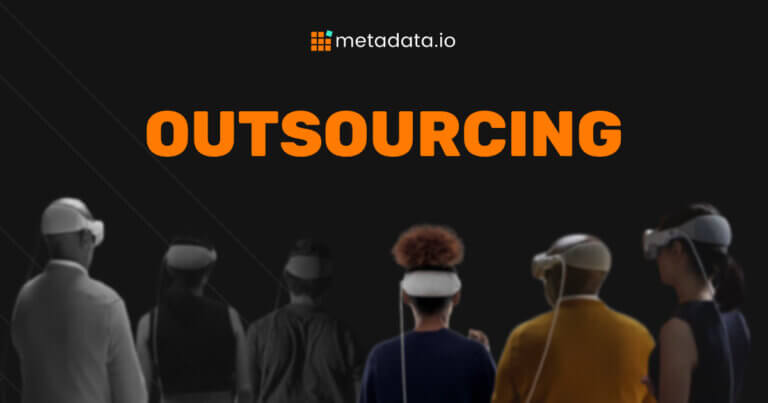How To Launch Software Products Part III
Don’t look now — but you did it.
YOU LAUNCHED YOUR SOFTWARE PRODUCT.
- You captured all the data to position your product effectively
- You educated the hell out of your audience to prep them for your launch
- You introduced totally new technology to the market
- And you made sure every rep and buyer had every tool they needed to know how to use it
Time to pop some bottles, because IT’S OVER! SUCCESS! ONTO THE NEXT LAUNCH!

Don’t hate me just yet. You can keep sippin’ on that beverage because you have A LOT to celebrate.
The foundational knowledge stage is emotionally exhausting, and the launch stage is tactically taxing — and now that’s all effectively behind you. There’s plenty of reason to celebrate.
But the goal of this whole product marketing thing isn’t just to pull back the curtain on new technology. It’s to maximize adoption and drive recurring revenue.
And showing your audience what you have to offer falls short of (in my opinion — and Simon Sinek’s) the ‘why.’
What do I mean by showing them the why?
There’s a reason Pottery Barn sells all their furniture by setting up adorable little staged kitchens and bedrooms in their showrooms and catalog. And it’s not because the salespeople like to playhouse.
It’s because they know showing you a fantastic, beautiful, comfortable, expensive chair by itself is not nearly as compelling as showing it to you in context.

Add a throw blanket, a matching rug, a coffee table to kick your feet up on with a scented candle, and family photos? Issa VIBE.
That ‘place to sit’ just became your window to what your life could look like. The vision has been painted, it’s tangible, it’s real, and it’s appealing as hell.
You’re no longer buying a chair, you’re buying an experience, an emotion, and an outcome so real you’ve actually SAT in it, smelled it, felt it, and connected with it.
Who says software can’t elicit the same connection we get as B2C consumers?
In this final stage, we’ll break down how you can maximize adoption and beef up those recurring revenue numbers by transforming your product launch into a sticky, inspiring, ROI-driving business strategy, and we’ll do it in three key phases:
- Practical application
- Thought leadership
- Assessment
Phase I: Practical application
Math teachers had 4 modes: mad minute, overhead projector, worksheets, and tests.
Mad minute was the foundational knowledge stage — their way of reviewing what we already knew. How many multiplication problems could we knock out in a minute?
Some of us crushed it, some of us are still working that out in therapy. But it was the teacher’s way of knowing who was ready for division, and who still needed to strengthen that foundational knowledge muscle before learning anything new.
Overhead projector day was the product launch.
Follow along carefully, class, and if you’re feeling slick, stroll up to the Elmo and take a spin yourself. Just don’t be left-handed, okay, because those markers smudge so easily, and then it’s all over your hand, and the screen, god forbid your face — it’s a mess.
The worksheets though? That’s this stage: practical application.
That’s the “Molly has 62 watermelons, and can only eat 2 watermelons per hour. How many hours will it take for Molly to polish off all 62 watermelons?” crap that in the moment, felt absolutely ridiculous, but in hindsight, was actually the only vision we had into how the hell any of this even plays out in the real world.
Practical application made us tie newly acquired information to real-life — in other words, the product launch to our own use case.
Like damn, maybe I do actually need division (ahem, this new software) to get through my day.
If you executed the launch stage effectively, you’ve successfully turned once green buyers into bonafide technical wizards through assets, tools, and demos. Your buyers are now intimately familiar with what your product does. Now is the time to teach them how to use it. And you’ll want to start PRACTICALLY.
Some ways to arm your buyers with the practical application can include:
1. Playbooks
These are the “5 steps to getting _____ going TODAY” guides that shamelessly leverage our affinity for Buzzfeed-esque listicles to present real, useful 101-level steps to using and getting initial value out of your new product.
2. Pro-tips
Think bite-size, 1-2 minute clips showing different best practices and use cases for drawing out quick, measurable value from your product that your buyers couldn’t do before.
Figure out who in-house has a smooth narration voice and knows a thing or two about the product, give them a script, have them share their screen, and hit record.
3. Video testimonials
Did you have the good fortune of running a beta or early adopter group before launch? Time to cash in, baby.
The high-fidelity output looks like setting up lighting, a camera, and an interview with a few customers on their turf to capture a 20-minute conversation about their experience, use cases, and outcomes using your new product.
More budget-friendly option?
Set up a zoom and get to work in iMovie. Want to lift even less? Ask them to leave a fresh video review on your G2 profile — hell bake that requirement into their beta agreement at the onset, and you’re golden.
These kinds of assets are evergreen and do more to build trust and reputation with your buyers than any Gartner or Forrester analyst is ever going to get you.
Phase II: Thought leadership
I warned you in the practical application stage to keep it practical, right?
We want our buyers to start using the product, but remember who your audience is at their core.
These are tech bros, not Plato. Get too woo-woo with them right off the bat and they’re going to run for the hills (read: dollar draft night).
But if we get them to just start using the product, and seeing some value, then we can start showing them what it’s really capable of. And that’s when the fun begins.
Because adoption is good, but retention is better.

In this stage, you’ll want to go beyond how to use your product and get value from it, to showing them why your product should be central to their overall business strategy.
Yes, everybody, this is the why stage. The think bigger stage. The dream with me for a minute stage.
And frankly, you’re probably going to want to go above the tech bros for this one.
Your target audience for thought leadership should land amongst the strategic drivers at your target accounts — think VPs, founders, department heads, and C suites.
These aren’t the people implementing the tool, they’re the ones signing the renewals, and holding their teams accountable for the output they’re getting from that software investment. Show leaders at your target accounts just how much value your solution can drive, and they’ll practically close the sale for you.
This kind of marketing should include:
Webinars
Don’t roll your eyes at me. I’m serious.
Boring-ass buzzwordy quick-fix webinars are tired and over, yes. Inspiring, differentiated, breath of fresh air webinars? Your buyers are begging for them. I know this because I’ve hosted a few. Hell, I’ve attended a few.
If you layer this channel into your launch strategy at this stage, choose hosts they actually care to hear from and keep the “sale” far from the discussion, you will get registrants. You will get attendees. And you will evangelize decision-makers from your top accounts, in about 1 hour.
Op-eds
I’ll give it to you, webinars are a heavy lift (as I exhale today from a 4-month long build-up to this morning’s webinar). But Op-ed pieces, albeit less flashy, can pack just as much punch if your thought leaders can write well (or, and you did not hear this from me, work with a fantastic ghost-writer).
You’re a business, so chances are, your ICP exists at your company.
Sell HR software? Have your Chief People Officer pen an op-ed about the state of HR, and how your software solves the challenges we’ll be facing in the next 10 years.
You’ll want this to come from a person who’s been around the block and has the credibility and experience to share an opinion people want to hear about.
These pieces are meant to inspire possibilities, expand beyond technology, and let people in leadership positions sit in that Pottery Barn living room for a second and imagine what life could be like.
Evangelize decision-makers at your top accounts, and this phase will pay dividends long beyond the conclusion of your launch, that’s a promise.
Phase III: Assessment
I’m getting emotional. We’re almost at the end, which means you’re almost ready to go crush the hell out of your next launch. I’m so proud of you for making it this far!
But I feel in my heart that I’d be doing you dirty if I didn’t bring it back to our teaching metaphor just one more time.

And it’s arguably the moment we’ve all been waiting for: The proof.
You’ve spent weeks…months…quarters (?!?!)… drawing out this product launch, creating compelling stories, positioning poetic narratives, launching differentiated features, and slinging inspirational dogma all in an effort to turn buyers, into customers, into believers — but there’s one thing in tech that speaks louder than all of it: data.
Cold, hard, shiny, indisputable, numerical validation. If they didn’t buy it before, numbers don’t lie. And if they didn’t trust you before, their peers don’t lie either.
This is where you lean into a customer-led growth engine to seal the deal. Capture a few solid customer stories, and ride those beautiful KPIs all the way into the sunset.
But before we dig into just how much juice you can squeeze out of a good customer story, one more food metaphor for the road:
There’s nothing I hate more than when people order a bone-in ribeye and CUT the meat away from the bone, leaving the richest, most flavorful part of the steak to get cold and thrown out.
YOU IDIOTS. YOU’RE THROWING AWAY GOLD.
Everyone knows you either gnaw the bone, or you bring it home to use as a base in your next cooking adventure.
(By the end of this blog series you’ve probably guessed I like my steak. So if you’re in Chicago and are looking for a fantastic steak experience, book a table at Steak48 on Wabash. You can thank me later).
But my point is, by simply turning a customer story into one lousy ass case study, you’re leaving cold-hard ARR cash on the table. Our customer’s time is valuable as hell. And ya know what? So is ours.
Here are some examples of getting extra miles out of customer story:
1. Case study blog
Write and publish your customer story for your blog site. Optimize it, and let the organic traffic roll in.
2. Case study PDF
Pair down that story into the challenge, solution, and outcome sections, with big sexy data callouts in a fully designed PDF. Gate this PDF behind matching display ads with GIANT data points as the focal point and fill that top of funnel.
3. Case study slides
Turn that story into 3 deck slides: Slide 1: The challenge. Slide 2: The solution. Slide 3: The outcome (make the data points the biggest part of that slide). Hand this over to sales to use in their pitches and watch the BOFU leads close.
4. Case study presentation
Give your customer the mic and let them tell their story on a webinar or conference panel.
If it’s a known company amongst your target audience, the logo will draw attendance, and co-presenting with a customer is one of the best ways to show, strengthen, and solidify that partnership. Retention and expansion with this account henceforth should be a breeze.

Well fam, that’s it.
That’s all she (I) wrote. I hope like hell this was digestible, and makes sense, and feels doable.
Give yourself grace when you try to implement these strategies. You’re not going to knock out every stage overnight, but I can bet the first time around you’ll get just enough validation from the market and your sales reps to give it another hack.
And before you know it, you’ll be off writing blogs for Metadata about how I SHOULD be launching products.
I’m proud of you, I’m excited as hell to see what our industry cooks up next, and I can’t wait to hear who checks out Steak48.
Til next time, Bears fans. Happy launching.
Meet Aubyn Casady
Principal Product Marketing Manager, G2
Aubyn Casady runs partner marketing in her role as Principal Product Marketing Manager for G2. She has spent her marketing career launching campaigns, products, and partnerships for some of Chicago’s top SaaS companies, while moonlighting as a freelance content writer and product marketing consultant.
Outside of her full-and-a-half-time marketing responsibilities, Aubyn manages and sings every weekend with Chicago’s premium event band, Rush Street Rhythm.
Connect with Aubyn on LinkedIn here.



